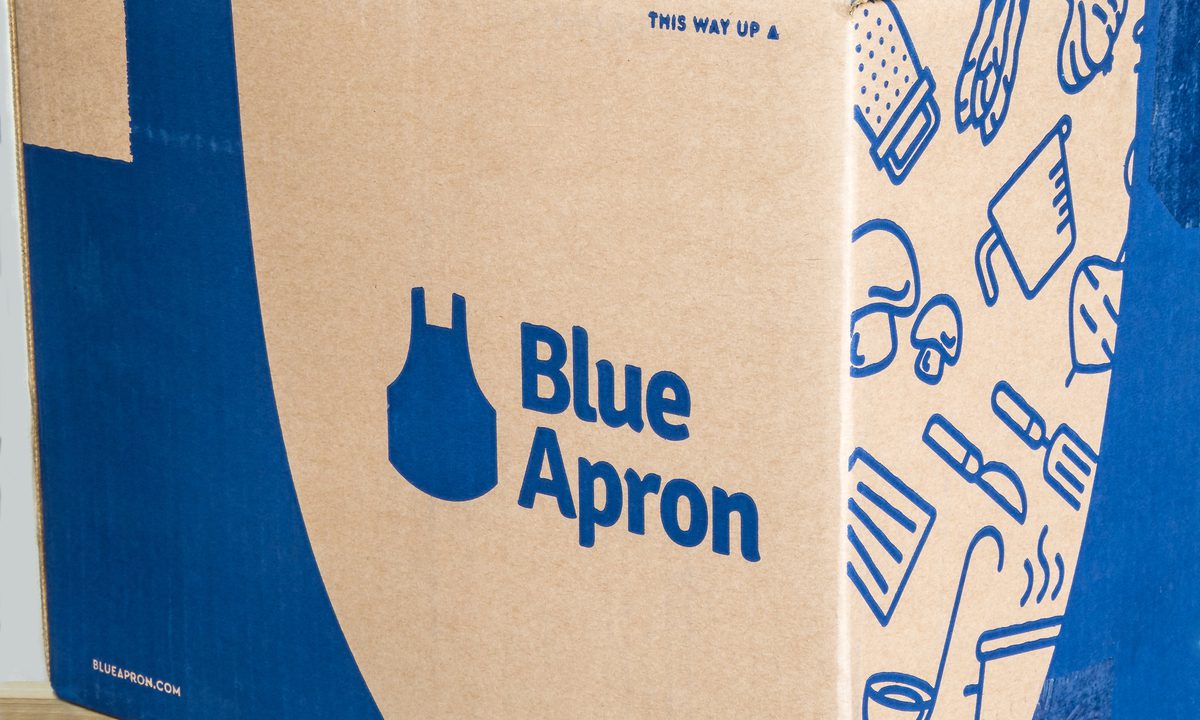
Meal kit subscription service Blue Apron is losing customers as consumers return to restaurants, contrary to the company’s assurances in 2020 that its investments in creating value for customers would enable it to retain its early-pandemic growth. The company reported Tuesday (Aug. 3) that it had 375,000 customers in Q2 of 2021, down 16,000 from the previous quarter, down 21,000 from the previous year and down 74,000 from the same quarter in 2019. At its peak, in Q1 2017, the company had just over 1 million customers.
As one might expect, the company seeks to reframe the conversation to metrics in which it has more or less held ground — average revenue per customer, orders per customer, and average order value (AOV) have all remained relatively flat, give or take a few percentage points, leading executives to argue that the meal kit subscription service continues to perform well with its customers.
See also: In Q1, Blue Apron Touts Retention While Competitor Spotlights Customer Acquisition
Discussing the increase in consumer mobility, Linda Findley Kozlowski, the company’s president and CEO, told analysts, “As far as opening up, we’re not seeing a huge number of changes in in order behavior. Again, we’re still seeing a lot of those very high value customers ordering a lot of the premium and other recipes … We are definitely seeing patterns where people are continuing to want to cook at home and being very interested in meal kits as a solution to do that.”
It is difficult to believe Kozlowski’s assertion that opening up has not had an impact on customer behavior. After all, in the three months that Blue Apron lost 16,000 customers, restaurant sales increased $31 billion, up to $206 billion total for April, May and June, compared to $175 billion for the first three months of the year, per U.S. Census Bureau data for food services and drinking places’ adjusted monthly sales.
You might also like: Blue Apron CEO Says Customers Will Keep Cooking After COVID
Still, Kozlowski states that the company is “very encouraged” by its performance with its base, arguing that the 3 percent year over year increase in AOV “represents not only continued engagement with these higher value products, but also continued retention and engagement of our customers long-term.”
In fact, restaurants are also gaining a significant share of the eating at home occasion. The 2021 edition of the Restaurant Readiness Index, a PYMNTS and Paytronix collaboration, which surveyed over 500 managers of quick-service restaurants (QSRs), finds that, for the average quick-service restaurant (QSR), only 24 percent of sales are for consumption inside the restaurant or at the restaurant’s outdoor seating, with the remaining 76 percent coming from off-premises channels.
Read more: New Data: Average Quick Service Restaurant Now Takes Up To 75 Pct Of Orders Remotely
Blue Apron has already lost the bulk of its early-pandemic revenue growth. The company brought in $124 million in net revenue in its most recent quarter, down from $131 million the previous year, but up from $119.2 million in 2019, indicating that the company’s performance was closer to pre-pandemic levels than from its lockdown highs.
To that point, net loss was $18.6 million, compared to a net income of $1.1 million in Q2 2020 and net loss of $7.7 million in Q2 2019, meaning that the company lost even more in the quarter than it did in the same period before the pandemic. It would appear that meal kit skeptics, those who suspected that these services’ strong 2020 performance may have been a temporary blip, may have been onto something, especially if Blue Apron cannot find a way to stay in step with consumers’ rapidly changing lifestyles.